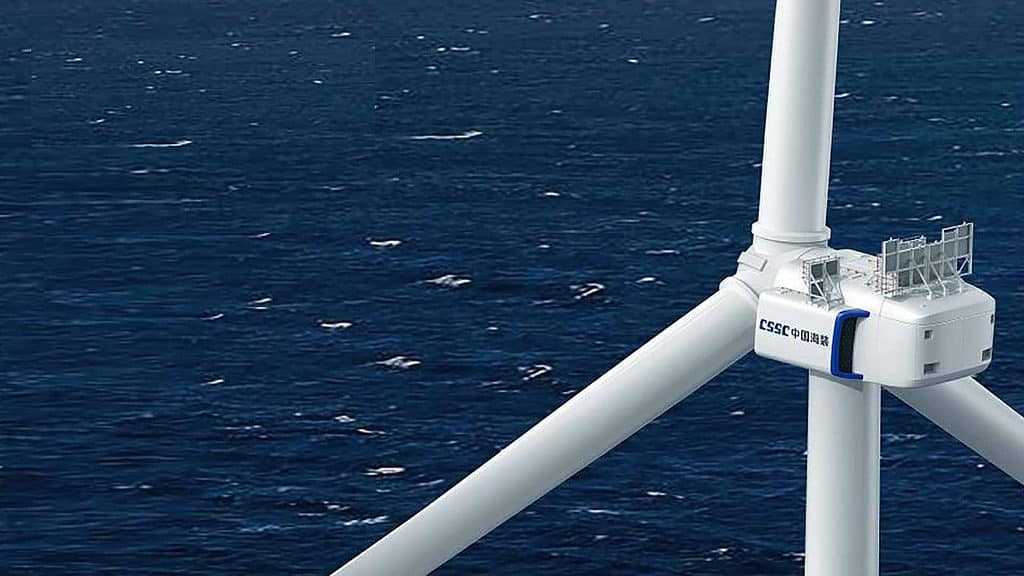Last year, GE Renewable Energy announced that its Haliade-X, the first wind turbine capable of more than 12 megawatts (MW), received a certificate of operations up to 14.7MW – making it the world’s most powerful wind turbine. But it looks like the Haliade-X will soon have to make room for an even more powerful wind turbine.
Industrial manufacturer CSSC Haizhuang, a subsidiary of China State Shipbuilding Corporation, one of China’s leading defence groups, has unveiled the first components of its massive 18-megawatt (MW) offshore wind turbine prototype. The company said in a statement that its design is “aspirant to the offshore wind turbine crown.”

The wind turbine will have a robot diameter of 260 meters (853 feet). That’s as long as the height of the Haliade-X, which has a rotor of 220 meters (722 feet). The turbine will also have 128-meter-long (420-feet-long) blades with a sweep area of 53,000 square meters (570,487 square feet). The blades will also have independent pitch control.
About 80% of the turbine’s components are being made in-house by the Chinese company. The H260-18MW will generate 44.8 kilowatt-hours of electricity per revolution at full power. A single turbine will produce over 74 million kilowatt-hours of clean energy per year – the annual electricity consumption of over 40,000 households.
“The turbine will make a great contribution to the improvement of turbine capacity and efficiency, as well as reducing the LCOE [levelized cost of energy] of offshore wind farms,” reads the company statement. “Large-scale and high-reliability of wind turbines is a requirement for the scale-up of wind power and its cost reduction.”
Though smaller, other wind companies are also working on exciting developments that could soon disrupt the market. MingYang Smart Energy is working on a 16MW wind turbine, capable of generating 80GW of electricity every year. Vestas and Siemens will soon have their 15MW wind turbine, while GE seeks to ramp up its HaliadeX even further.
The expansion of wind power
The global wind industry had its second-best year in 2021, the latest year with available information, with almost 94GW of capacity were added globally. Europe, Latin America, Africa and the Middle East had record years for new onshore installations. Over 21GW of offshore was commissioned, three times over 2020.
A report last year found offshore wind power could provide sufficient clean electricity for every person on Earth 18 times over. The International Energy Agency found offshore wind capacity could increase 15-fold and attract around $1 trillion of investment by as soon as 2040 thanks to declining costs and technological progress.
However, wind energy is still not growing fast enough to reach a secure and resilient energy transition. At current installation rates, we’ll have by 2030 less than two-thirds of the wind energy capacity needed to meet the climate targets of the Paris Agreement, according to the International Renewable Energy Agency (IRENA).


